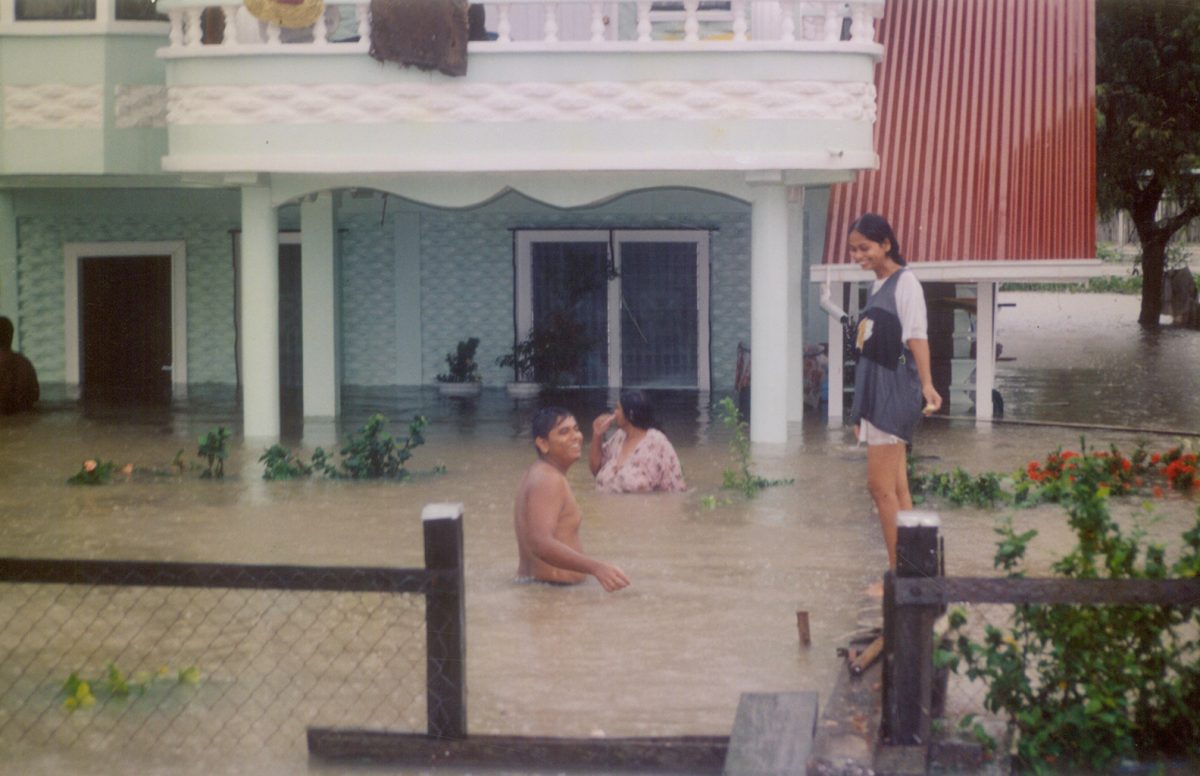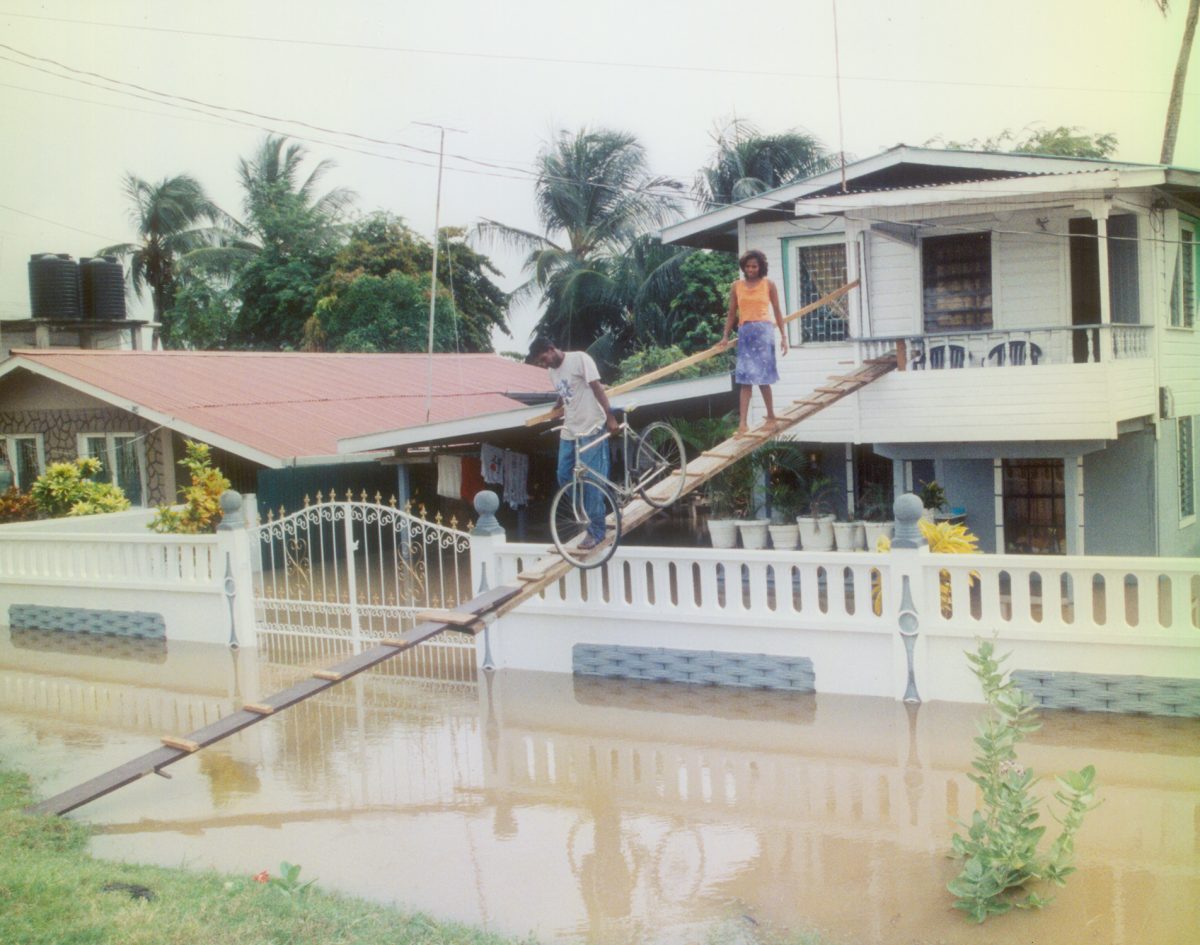BY DR. TARA SINGH
His supporters shower him with a litany of political skills and accomplishments; his critics offload a barrage of invectives upon him; while others are still waiting to pass their judgment. Love him; hate him; or be indifferent towards him; those feelings would not derail this man from the track that he has already carved out for a rightful place in history. A recent NACTA poll indicated that he is still the most popular political leader who has also positively changed the economic and political landscape of Guyana. At 35, he became Guyana’s youngest President, and also one of the youngest heads of state in the world. Driven by a vision, ignited by his famous mentor Dr Cheddi Jagan, he worked assiduously with others to steer the country into economic progress, including financial solvency. It was in 2006 that the World Economic Forum (WEF) identified him as one of their ‘Young Global Leaders.’ Four years later he was invited by the United Nations Secretary General (SG) to serve on the SG’s High Level ‘Advisory Group on Climate Financing.’
It is precisely Jagdeo’s tremendous contribution, especially at the international level that has caused many institutions to recognize his works and honor him with citations, honorary degrees and international appointments. These accolades include the conferment of four honorary doctorates as testament to his remarkable contribution to climate change and global warming. The conferring universities are: Peoples' Friendship University of Russia, TERI University, the University of Central Lancashire, and Trent University. The honorary doctorates, combined with international recognition and awards, have made Jagdeo a towering figure in international relations.
When he left office as President in 2011, at age 47, Guyana had recorded its 5th consecutive year of unprecedented growth at an annual rate of 5%. Apart from transforming Guyana's economy, he has contributed immeasurably to the dialogue and advocacy on global warming and climate change, not to mention the Low Carbon Development Strategy (LCDS) that cast him into a high profile role in the international arena. Naturally his critics, detractors and party defectors, will continue to focus on negatives (whether real or imaginary) and ignore the many positive developments that have moved the country forward into the 21st century. It is rather unfortunate that much of the criticisms leveled against him has been based on subjective factors, like racism, which is the leading social problem in Guyana. This is a sensitive issue from which even skillful and experienced politicians shy away.
Based on his own experience at an event in New York in 2016, he was labeled a racist for speaking out against the ugly practice of racism in Guyana. It has become fashionable in Guyana for people to invoke racism as a way to silence or divert constructive criticisms from the existing PNC-led coalition government’s policies and actions. These tactics are driving people further away from the truth and also help to explain why Guyanese at home and in the diaspora do not necessarily have a good grasp of existing social reality. For example, his numerous international achievements are hardly known, nor well-articulated. Not much is known either about the strong ties that he shares with his family of origin, from which he draws enormous strength. In discussing his life, challenges, mis-steps and legacy, these two aspects (family ties and international accomplishments) must also be accorded a central place.
Bharrat Jagdeo is the youngest of six children born to his parents, Mr. Jagdeo and Mrs. Sursattie Jagdeo of Unity Village, East Coast Demerara. When his youngest sister, Ooma Jagdeo (Shanta) passed away about one year and a half ago, that was devastating to Jagdeo, but the collective strength of his extended family enabled him to bear that painful situation with fortitude. At Shanta’s death he said “Shanta was the epitome of a sister, she was a mother, my confidante and friend; she took care of me all my life, and I will miss her dearly.”
This depth of feeling attests to Jagdeo's close-knit family in which he is regarded and respected as the head. On occasions such as the Hindu festival of “raksha bandhan” (brotherly and sisterly love), for example, Jagdeo’s sisters would go to his home and tie the symbolic cord around his wrist to express their unconditional love for him. In return, Jagdeo has an unbreakable bond with his sisters, their children, and other close relatives.
Being honoured in his ancestral village in India
Jagdeo was not born with a silver spoon in his mouth. Like his parents and sisters, as well as other villagers, life was not easy. Attending school in Georgetown was not an option since his family couldn’t afford that. Instead, he attended Mahaica Multilateral School, where he walked from Unity village to Mahaica every day. At around the same time, at age 13, he joined the Progressive Youth Organization, and became a member of the PPP, at age 16. Having served in a leadership position at the district level, the youthful Jagdeo was awarded a PPP scholarship to study Economics in Russia where he graduated with a Master’s degree. Upon his return to Guyana in 1990 he worked at the State Planning Secretariat until 1992, when he joined the PPP/C government as an advisor to the Minister of Finance. In October 1993 Jagdeo was appointed a Junior Minister in the Ministry of Finance and in May 1995 he was appointed a Senior Minister in the Ministry of Finance. Simultaneously, he was also rising in the PPP hierarchy. In 1993 he was elected to the PPP Central Executive and later to the Executive Committee. At the PPP Executive Committee meeting in 2016, Jagdeo was elected General Secretary of the Party. In his capacity of both a Junior and a Senior Minister of Finance, he continued to lead the then PPP government team on the country’s debt reduction program and the liberalization of the economy.
When Mrs Janet Jagan resigned as Guyana’s President in 1999, she passed on the Presidency to Jagdeo. It was apparent that the Jagans had anointed Jagdeo as their successor, but a few detractors believed otherwise. The Jagans’ decision proved to be visionary. Despite strenuous and sustained efforts by opposition forces to make the country ungovernable, Jagdeo’s tenure as President eventually led to unprecedented growth, especially during the period 2006 to 2011, when the GDP grew at an average of 5% annually. This growth level outpaced that of all the Caribbean and South American countries. Guyana had also moved up from a position of a bankrupt and debt-laden country to an upper middle income country.
At the international level, Jagdeo’s record is almost unmatchable. In 2003, as the Head of Government for Agriculture in the Caribbean Community, he gave birth to the "Jagdeo Initiative", which was designed to build a "more competitive and sustainable agricultural sector" by 2015. Sadly, agriculture has become a victim of political intrigues by the APNU-AFC coalition government that took the reign of power since May 2015. Only three sugar estates, for example, are allowed to operate from the beginning of January 2018. At that time over 6,000 sugar workers have joined the breadline. The prospects of alternative jobs are dim, and the livelihood of over 25,000-30,000 people have been jeopardised.
In his second term (2006-2011) Jagdeo became a powerful advocate for climate change and global warming. In 2008, the Times magazine named Jagdeo as one of their "Heroes of the Environment,” and in 2010 he was granted the United Nations’ "Champion of the Earth" award, and was also invited by the Secretary General of the United Nations to serve on the Secretary General's ‘High Level Advisory Group on Climate Financing.’ The Low Carbon Development Strategy (LCDS) sets out a plan to "protect Guyana's 18 million hectares of forest, and to address the 17% of global greenhouse gas emissions that result from deforestation and forest degradation, and re-orient the Guyanese economy onto a long-term low deforestation, low carbon, climate resilient trajectory."
Nobel Laurette Dr Pachauri, former Chairman of the Intergovernmental Panel on Climate Change, hailed Jagdeo as someone among a select group of leaders “who have in-depth understanding of the varied impact of climate change. There are very few heads of government in the world who understand the scientific, economic and social dimensions of climate change like Jagdeo. His sense of the global injustice that climate change represents is combined with a very rare understanding of key issues, and a global vision of suitable solutions.” Regrettably, the LCDS has not been embraced by the Granger administration. Closely linked to the LCDS was another crucial project, the Amalia Falls hydro project, which experts describe as an important potential source of low cost energy, but which the coalition government stymied, then abandoned.
In 2008, the Times magazine named Jagdeo as one of their "Heroes of the Environment,” and in 2010 he was granted the United Nations’ "Champion of the Earth" award, and was invited by the Secretary General of the United Nations to serve on the Secretary General's High Level Advisory Group on Climate Financing.
Jagdeo is a Patron of the Delhi-based World Sustainable Development Forum. In 2011, Heads of State and other leaders from the world's rainforest countries asked Jagdeo to serve as "Roving Ambassador for the Three Basins" (Amazon, Congo Basin, South East Asia), a position that he still holds. In March 2012, the world's largest environmental organization, the International Union for the Conservation of Nature (IUCN), announced that Jagdeo would become the IUCN High Level Envoy for Sustainable Development in Forest Countries and an IUCN Patron of Nature. Jagdeo was also the President of the Assembly of the Korea-based Global Green Growth Institute (GGGI), which is the world's newest international organization, comprising about 20 member states.
In June 2013, Commonwealth Secretary General appointed Jagdeo as leader of a high-level team of experts to identify solutions for unlocking resources to enable small, poor and climate-vulnerable Commonwealth countries to combat climate change. Jagdeo presented the report to the 53 Heads of Government and other leaders of the Commonwealth (representing about a fifth of the world's population) at the 2014 Commonwealth Heads of Government Meeting in Colombo, Sri Lanka. In March 2013, the ACP (African, Caribbean, and Pacific) Council of Ministers inaugurated a 14-member Eminent Persons Group (EPG), whose mission is to provide guidance and concrete recommendations for the future of the ACP Group. Jagdeo was appointed as one of the two deputy co-chairs.
For his overall accomplishments, Jagdeo was awarded the Pushkin Medal by the Government of Russia, the Pravasi Bharatiya Samman Award by the government of India, the Order of Merit 'Forte Sao Joaquim'by the State of Roraima, Brazil. Jagdeo was elected as Chairman of the Board of Governors of the International Monetary Fund and the World Bank in September 2005, and served there for one year. To have served in such prestigious position spoke volumes about his qualifications, experience, as well as, the high esteem in which he is held by top diplomats, statesmen, and international bodies.
In March 2013, the ACP (African, Caribbean, and Pacific) Council of Ministers inaugurated a 14-member Eminent Persons Group (EPG) whose mission is to provide guidance and concrete recommendations for the future of the ACP Group. The 14 members of the group who met in Brussels designated Jagdeo as one of the two Vice Chairs. What is also not widely known is his impressive record of international accomplishments. Once people learn about or become acquainted with these, their attitude towards Jagdeo will improve. What is also not widely known is that Jagdeo’s resilience has been derived partly from his educational background and partly from his family ties. These are integral to Jagdeo’s life and his legacy, which his critics could only envy, but are unable to destroy.














